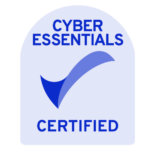Cyber Essentials is designed to give businesses a clear benchmark for protecting themselves against common online threats. But achieving certification isn’t always guaranteed on the first attempt. Many organisations discover gaps in their processes, outdated systems, or overlooked security measures that can lead to an unsuccessful result. Understanding why failures happen and how to avoid them is the first step to turning the process into a valuable learning opportunity rather than a setback.
What is Cyber Essentials?
By putting in place a foundation of technical controls, Cyber Essentials, a certification program supported by the UK government, assists businesses in defending against frequent online cyberattacks. Firewalls, safe configuration, security update management, user access control, and malware protection are its five main areas of focus. A self-assessment questionnaire is used to obtain certification, which is then evaluated annually.
Is Cyber Essentials a Requirement for Businesses?
Cyber Essentials is not legally required for all businesses in the UK, but it is strongly recommended and in some cases essential. Many government contracts and some industry sectors require certification as part of their security standards. Even when it is not mandatory, having Cyber Essentials demonstrates that your business takes cybersecurity seriously, protects customer data, and reduces the risk of common cyberattacks. In practice, it can also give your business a competitive edge by building trust with clients and partners.
Why Do I Need Cyber Essentials?
To safeguard your company from typical cyber threats, gain the trust of suppliers and customers, and fulfil government contract requirements, you need Cyber Essentials. It can lower insurance claims, serve as a bedrock norm, and show your dedication to fundamental cybersecurity.
What is the Difference Between Cyber Essentials and Cyber Essentials Plus?
In addition to the Cyber Essentials validated self-assessment questionnaire, Cyber Essentials Plus entails a technical examination of the business’s systems to confirm the existence of the Cyber Essentials measures.
Although the level of assurance varies, the controls for Cyber Essentials and Cyber Essentials Plus are identical. Because a third party has verified that the controls are correctly applied, Cyber Essentials Plus provides a higher level of assurance.
Can I Fail Cyber Essentials?
The Cyber Essentials exam is a straightforward “pass or fail” test. You normally have two working days to correct any errors and submit again at no additional expense if you don’t pass the first evaluation. You will need to reapply and pay the entire assessment cost if, after the two-day period, you still fail.
What Happens If I Fail Cyber Essentials?
Failing Cyber Essentials can lead to different issues that your business might encounter. The first and biggest drawback that will happen if you fail Cyber Essentials is that your certification will be revoked. You’ll then have to reapply if you want to pass and become Cyber Essentials certified. This can be a time-consuming process and will cost you money. Another drawback of failing your Cyber Essentials certification is that it can negatively impact your business’s reputation.
What Happens If I Fail Cyber Essentials Plus?
Cyber Essentials Plus needs you to fulfil the scheme requirements and make sure everything is in order, just like the basic certification. It should be simple to pass Cyber Essentials Plus if you have completed the foundational certification and everything is in order.
However, you will have the opportunity to correct any failures or non-compliances if certain requirements are discovered to be missing or not in compliance with the scheme during auditing. Before you are certified, you have up to 30 days from the audit date (or 90 days from the basic certification date, whichever comes first) to provide proof that corrective actions have been taken and the auditor is satisfied with the results.
What Can I Do to Reduce the Chance of Failing Cyber Essentials?
There are a few things you can do to make sure you don’t fail your Cyber Essentials certifications. Here’s what you can do to reduce the chance of failing Cyber Essentials:
- Read the IT requirements document.
- Make sure that your business’s software firewalls and antivirus software are installed on all devices and are working.
- Ensure that multi-factor authentication is enabled on all cloud platforms.
- Make sure that you are not running any outdated operating systems or tools.







